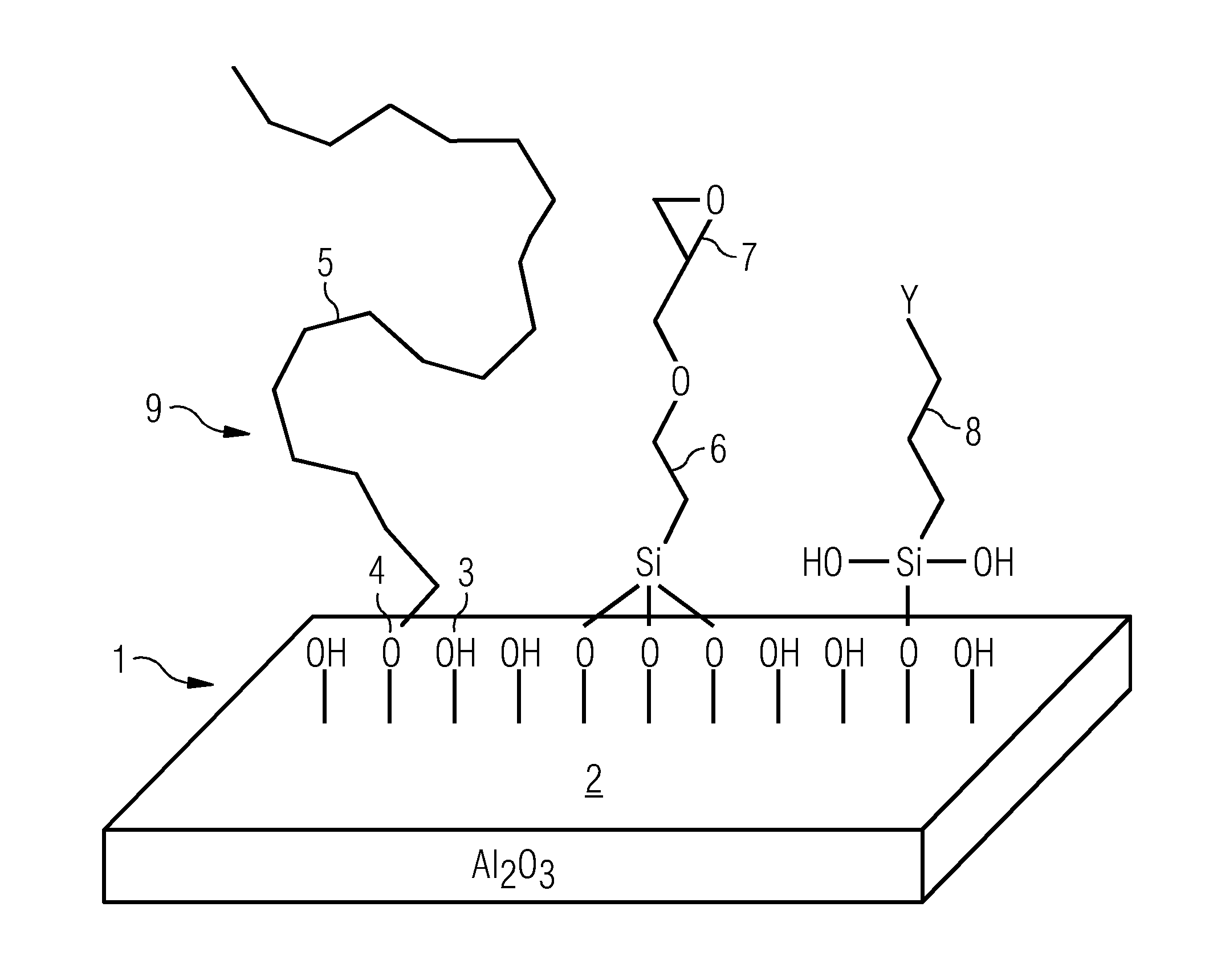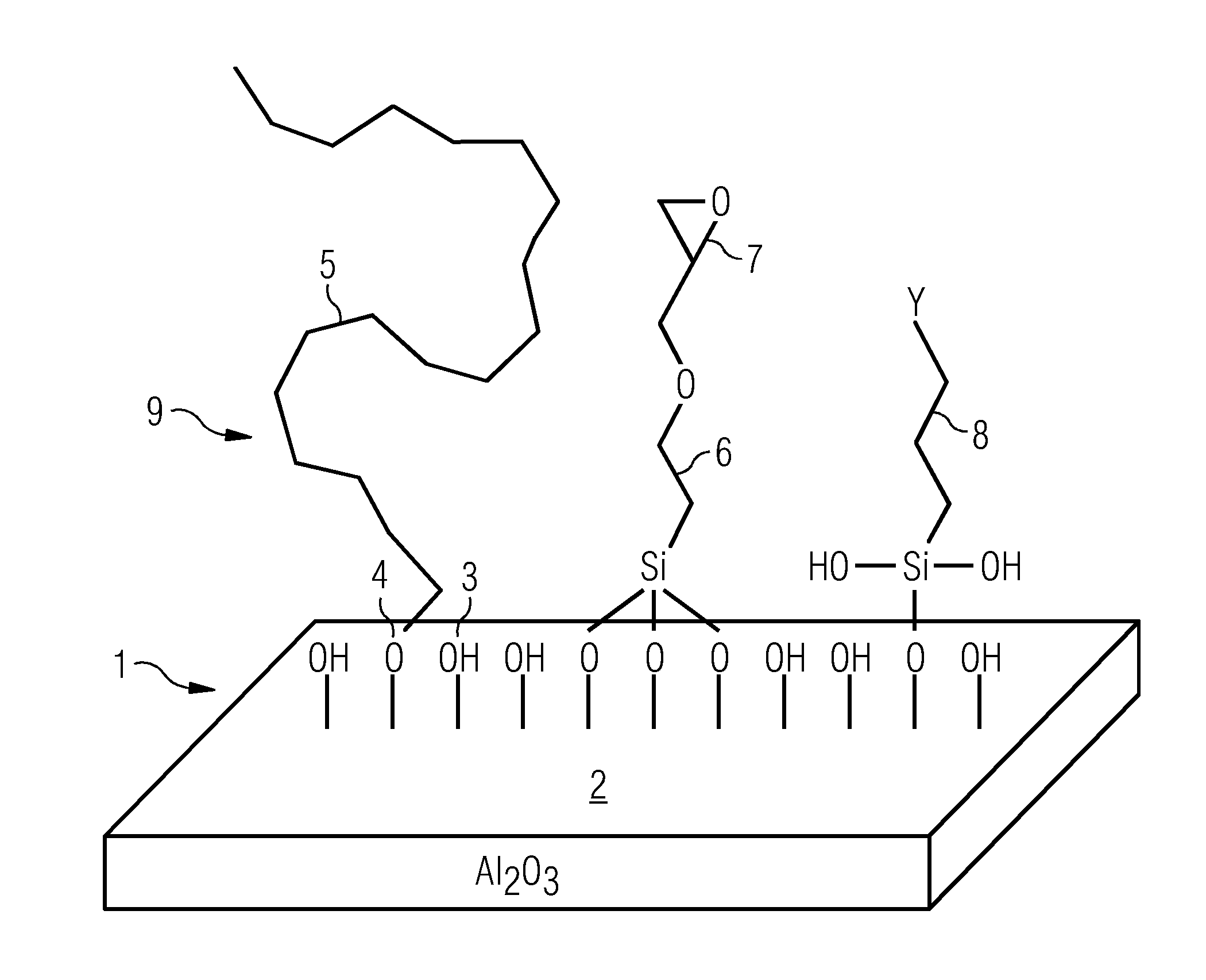Method for producing a porous particle composite for an electrical insulating paper
a technology of electrical insulation paper and composite materials, which is applied in the field of producing porous particulate composites for electrical insulation paper, can solve the problems of electrical sparking through the insulation, formation of “treeing” channels in the insulation, and conventionally under 100 micrometer particle size, and achieves high thermal conductivity
- Summary
- Abstract
- Description
- Claims
- Application Information
AI Technical Summary
Benefits of technology
Problems solved by technology
Method used
Image
Examples
Embodiment Construction
[0018]As is clear from the FIGURE, an aluminum oxide particle 1 in platelet form has a particle surface 2. Provided on the particle surface 2 are hydroxyl groups 3 and bonded oxygen atoms 4. By way of example, three different groups bonded to the particle surface 2 are shown: an alkyl group 5 bonded via an oxygen atom 4, a silyl group 6 bonded via three oxygen atoms 4 and having an epoxy group 7, and a dihydroxysilyl group bonded via an oxygen atom and having a variable Y radical. The groups from an essentially monomolecular thin layer 9 on the particle surface 2.
[0019]With reference to three examples, the process according to the invention is illustrated in detail hereinafter.
[0020]A dispersion of aluminum oxide particles 1 in platelet form, water and the 3-glycidoxypropyltrimethoxysilane functionalizing agent is prepared. 3-Glycidoxypropyltrimethoxysilane forms, in a condensation reaction at the surface of the aluminum oxide particles 2, an essentially monomolecular thin layer 9 h...
PUM
| Property | Measurement | Unit |
|---|---|---|
| Mass | aaaaa | aaaaa |
| Solubility (mass) | aaaaa | aaaaa |
| Heat | aaaaa | aaaaa |
Abstract
Description
Claims
Application Information
 Login to View More
Login to View More - R&D
- Intellectual Property
- Life Sciences
- Materials
- Tech Scout
- Unparalleled Data Quality
- Higher Quality Content
- 60% Fewer Hallucinations
Browse by: Latest US Patents, China's latest patents, Technical Efficacy Thesaurus, Application Domain, Technology Topic, Popular Technical Reports.
© 2025 PatSnap. All rights reserved.Legal|Privacy policy|Modern Slavery Act Transparency Statement|Sitemap|About US| Contact US: help@patsnap.com


